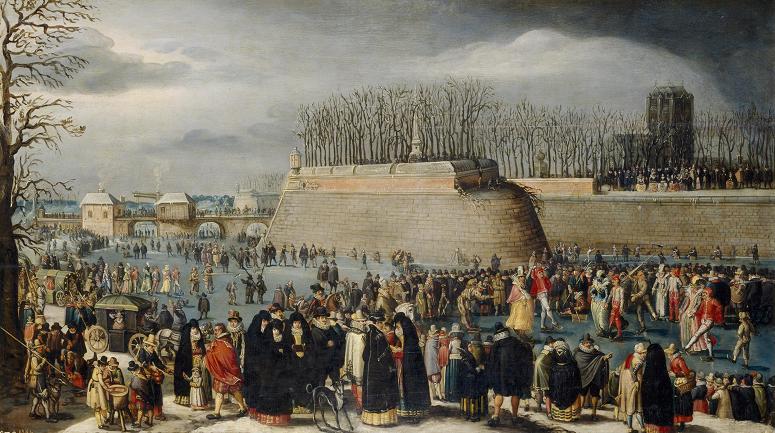Denis van Alsloot (1570 - 1626). Denis van Alsloot or Denijs van Alsloot was a Flemish landscape and genre painter, draughtsman and tapestry designer. He was employed as a court painter and worked for the local elite in Brussels. He is considered to be a member of the Sonian Forest school of landscape painters, which included landscape painters such as Jacques d'Arthois and Cornelis Huysmans. These painters working in Brussels had a preference for depicting scenes from the Sonian Forest near Brussels. Van Alsloot was also a specialist in depicting civil processions, local festivals and ceremonies. Van Alsloot was born in Mechelen or possibly Brussels. His father was a tapestry worker. It is not known who was his teacher. He is first recorded in official records when he joined the Brussels Guild of St Luke in 1599 as a tapestry designer. He also took his first pupil in 1599. He trained a further three apprentices between 1599 and 1625. Van Alsloot was exclusively working on the design of tapestries until 1606, the year in which he signed his first painting. Alsloot's career started to take off from the early 17th century after he was appointed court painter to Albert and Isabella, the governors of the Spanish Netherlands. He became a painter to the elite and served a clientele of princes, courtesans and influential state officials. He was still alive in 1626 as is testified by a painting dated in that year. He must have died in or before 1628 as two works he had left as inheritance to a niece were bought in 1628 by the Archduchess Isabella. Van Alsloot started out in the same profession as his father as a designer of cartoons for the local tapestry works in Brussels. In 1603 he designed a series of tapestries of Grotesques for the Archdukes. His painting career seems to have started around 1606. He mainly painted landscapes and scenes of local festivals and ceremonies. His work can be regarded as transitory in the development of landscape art in the early 17th century. All his known dated works were made in Brussels between 1606 and 1626. He often signed his works with the addition of S.A.Pic. This is short for Serenissorum Archiducum Pictor, a reference to his official position as a court painter to Archduke Albert and Archduchess Isabella. Van Alsloot painted topographically accurate as well as imaginary landscapes, including summer and winter landscapes. Like later landscape painters in Brussels such as Lucas Achtschellinck, Lodewijk de Vadder and Jacques d'Arthois, van Alsloot drew inspiration from the Sonian Forest near Brussels. His forested landscapes often incorporate views of castles and abbeys located in the Sonian Forest near Brussels. As van Alsloot's works are generally topographically accurate, it is possible to identify places that still survive, especially near the abbeys of Groenendael and Ter Kameren. His series of views of the abbeys in the Sonian Forest was presumably made on commission for the Archduke Albert. He painted several versions of the winter view of Groenendael, all with differences as well as a few summer views. Some of his works have an archaic feeling and appear inspired by landscape painting of the 16th century. The style of his landscape paintings shows an affinity with the work of Gillis van Coninxloo. In comparison to van Coninxloo, van Alsloot's work is calmer and more static, uses a softer palette and is more precise of touch and more realistic. As such his work appears to be a synthesis of the styles of van Coninxloo and Jan Brueghel the Elder. He also produced a number of landscape drawings that were likely intended as independent works of art. An example is the Forest Landscape with a Distant Castle of 1608 in the J. Paul Getty Museum, which is a fully developed and refined composition of a forest landscape with a view on buildings in the distance. The scenes in his landscape art often depict an actual site with topographical correctness and precision. He was also commissioned by the court of Albert and Isabella to paint views of their estates at Mariemont and Tervuren and of the Abbey of Groenendael. He often collaborated with Hendrick de Clerck who painted the staffage in his landscape and mythological works. These landscapes contained mythological or biblical figures and were typically signed by both painters. There exist landscapes by van Alsloot not co-signed by the two painters in which the staffage was likely also made by de Clerck. The figures painted by de Clerck were draped in vividly coloured clothing, which clashed with the brown-green tonality of the landscape painted by Alsloot. He received commissions to make paintings of local festivals and ceremonies.
more...










